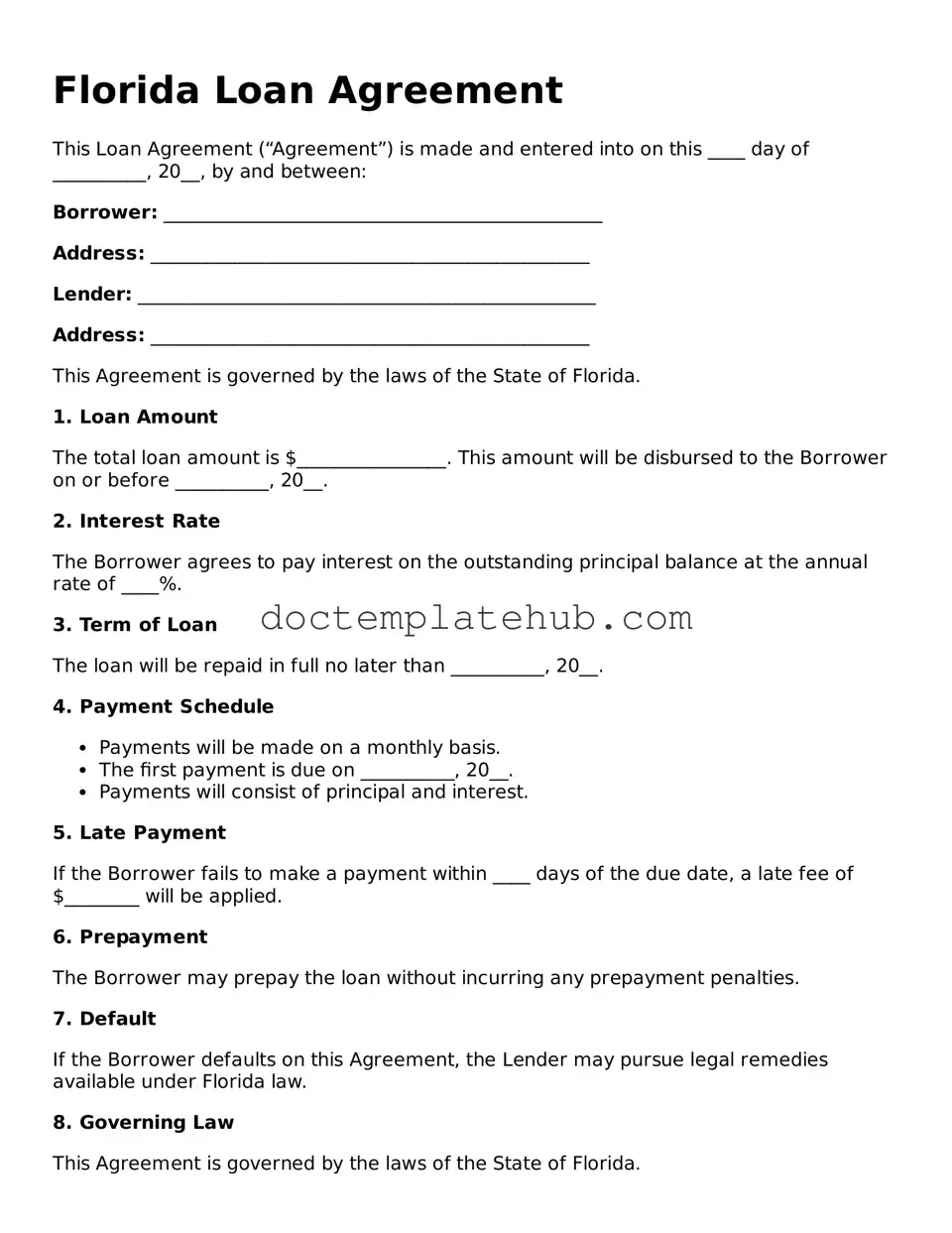What is a Florida Loan Agreement form?
A Florida Loan Agreement form is a legal document that outlines the terms and conditions of a loan between a lender and a borrower in the state of Florida. It specifies the amount borrowed, the interest rate, repayment schedule, and any collateral involved. This agreement serves to protect both parties and ensure clarity regarding the loan terms.
Who can use a Florida Loan Agreement form?
Any individual or entity that intends to lend or borrow money in Florida can use this form. This includes personal loans between friends or family, business loans, and loans from financial institutions. It is essential for both parties to understand the terms and conditions outlined in the agreement.
What information is required in the form?
The Florida Loan Agreement form typically requires the following information: names and addresses of both the lender and borrower, the loan amount, interest rate, repayment schedule, due dates, and any collateral securing the loan. Additionally, it may include provisions for late payments and default conditions.
Is a Florida Loan Agreement legally binding?
Yes, once signed by both parties, a Florida Loan Agreement is legally binding. This means that both the lender and borrower are obligated to adhere to the terms set forth in the document. Failure to comply may result in legal consequences, including potential lawsuits.
Do I need a lawyer to create a Florida Loan Agreement?
While it is not legally required to have a lawyer draft a Florida Loan Agreement, it is advisable to seek legal assistance, especially for larger loans or complex agreements. A lawyer can ensure that the agreement complies with Florida laws and adequately protects your interests.
Can the terms of a Florida Loan Agreement be modified?
Yes, the terms of a Florida Loan Agreement can be modified if both parties agree to the changes. It is important to document any modifications in writing and have both parties sign the revised agreement to avoid misunderstandings in the future.
What happens if the borrower defaults on the loan?
If the borrower defaults on the loan, the lender may take legal action to recover the owed amount. This can include filing a lawsuit or, if collateral is involved, seizing the collateral as outlined in the agreement. The specific actions available to the lender will depend on the terms of the agreement and Florida law.
Are there any restrictions on interest rates in Florida?
Florida law does impose some restrictions on interest rates, particularly for consumer loans. The maximum allowable interest rate can vary based on the type of loan and the amount borrowed. It is essential to ensure that the interest rate specified in the agreement complies with state regulations to avoid legal issues.
Can a Florida Loan Agreement be used for business loans?
Yes, a Florida Loan Agreement can be used for business loans. The form can be customized to reflect the specific terms and conditions relevant to business transactions. It is crucial for both parties to clearly outline the purpose of the loan and any associated risks.
Where can I obtain a Florida Loan Agreement form?
A Florida Loan Agreement form can be obtained from various sources, including online legal document services, financial institutions, or legal professionals. It is important to ensure that the form is up-to-date and compliant with Florida laws before use.
